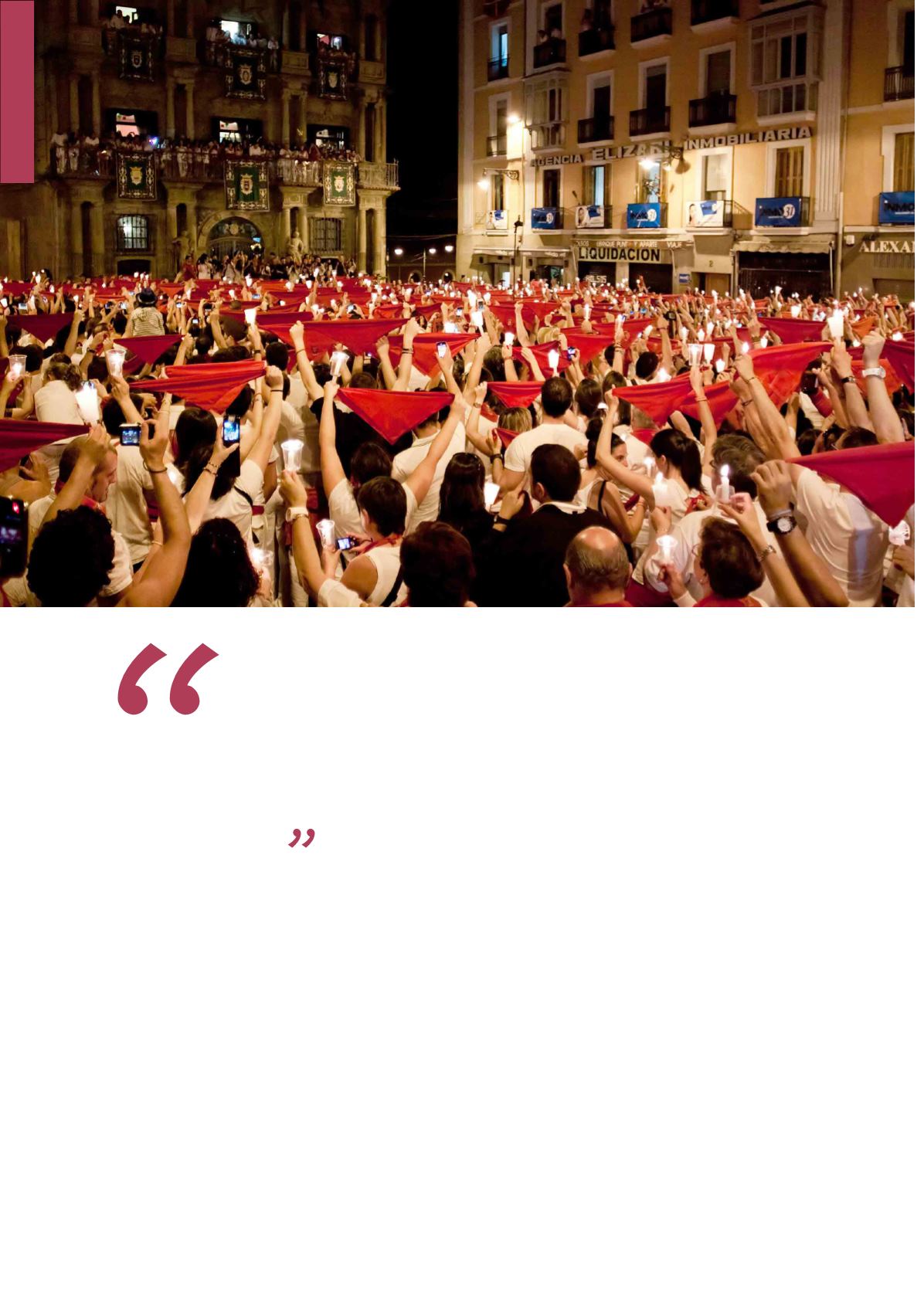
One of the
city’s major attraction
is to go to every bar and
try the different tapas
When Hemingway first came to Spain, like
any tourist visiting a new destination, he
could not imagine the great interest that
would be sparked by the country and by
Pamplona, in particular. The festive atmos-
phere, the Spanish personality and the bull-
fights seduced him in such a way that they
became the backdrop for some of his best
novels and also his second home.
It is easy to fall in love with this city in the
north of Spain, founded by the Romans
and crossed by the Road to Saint James.
A modern and welcoming city, it offers a
wide range of activities: strolling through
its cobblestone streets, relaxing in its parks
and terraces, savouring its delicious tapas
at bars and taverns, visiting its historical
monuments, and going to the bullfights and
the running of the bulls, or admiring its tra-
ditional sports such as jai-alai.
History
Pamplona lies in a valley surrounded by
mountains, a location that has always at-
tracted human settlement. Tools made of
stone from about 75,000 years ago have
been found on the terraces along the banks
of the River Arga. In the first millennium
B.C., the area which is now under the city
was already settled by Basques, the origin
of the Basque name “Iruña” which trans-
lates into “the city”. The Roman general
Gnaeus Pompeius Magnus, better known
as Pompey, arrived in 75 B.C. and founded
the city which followed the Roman urban
model. He named the city Pomaelo and
strengthened its functions as a strategic
link between the Iberian Peninsula and the
rest of Europe.


